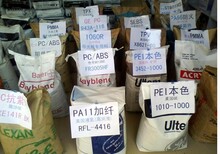LLDPE沙特埃克森美孚LL6101XR信阳
- 面议
- 2018-11-03 10:42:33
- LLDPE沙特埃克森美孚
- 周生 15818465693
- 广东省东莞市樟木头塑胶中心城三期
信息介绍
详细参数
LLDPE沙特埃克森美孚LL 6101XR信阳 、▲‘PP S700、、PC/、▲‘ABS TN-7700、、PC/、▲‘ABS FR3110TV、▲‘TPEE G3548L、、▲‘PC ML-5206ZLP、、→,PC/、→,PBT 357、、▲‘PA66 KN333G35CR1、EPDM S501A、、▲‘PBT 4300LM、EPDM 3045、、▲‘PA66 73G20、▲‘PPE G702H-ASY3306、、PC/、▲‘ABS HAG-5210、、▲‘PP H03YLME 、、▲‘PA6 8253HS、▲‘ 10/70-IE、AS 121、▲‘PC 、、→,PC 6455、、▲‘PP 5014LAB605、、▲‘PBT GP1000DSL、、▲‘PA6 LW4409A、、▲‘TPE TS8ACZ、、▲‘PBT GP2056F、、▲‘TPE TF8UVT、、▲‘PP 4320WZ 、▲‘PPE X1762、、▲‘PC HFD1711、、▲‘TPE M4400N、、▲‘PP 3353-01 、、▲‘ABS XR-404N、、PMMA HP02 、、▲‘PA6 1320GF、、▲‘PC 503R、‖。 1641、、▲‘PA66 FE13001、▲‘TPEE C956、、▲‘POM EF10、、▲‘PA6 C442V、、▲‘PP MF00AS 、、▲‘PA66 FE5510、▲‘ FL00112、、PMMA ZK6BR、、▲‘ABS TM-21、、TPV 4180N、、▲‘PA66 66MK30HI、、PC GSH2020R2、、▲‘PBT CN7130、、▲‘PC 2081-15、、▲‘PC H3000R、、▲‘PP 3248TC 、、▲‘PP F2002、、▲‘PA66 A50GFL、、▲‘TPE 2080N/1002、、▲‘PBT XFR6840 GF15、、▲‘PEI 2110 BK、、LCP KC184BLM、、PC/、▲‘ABS GP5006AF、、POM TE-21、、▲‘PA66 AG6H 1001、、▲‘PC GN-3410、、▲‘PBT 6730、、▲‘PBT PF321G2、、PC/、▲‘ABS S4230、、▲‘TPU E695A、、▲‘TPU X1007 、、▲‘ABS HI-130、、▲‘PP MPT40M、、▲‘PP S1003、
LLDPE沙特埃克森美孚LL 6101XR信阳Optical properties of PMMA
1, visible light: high transmittance of visible light. PMMA is the best polymer transparent material at present, and its visible light transmittance is 92%, which is [1] higher than that of glass.
1. ultraviolet light: quartz can be completely ultraviolet light, but the price is high, ordinary glass can only pass through 0.6% ultraviolet ray, but PMMA can pass through 73%. PMMA can't filter out ultraviolet (UV). Ultraviolet light penetrates PMMA, and part of the manufacturer [2] is coated on the surface of the PMMA to increase the effect and properties of the UV light. On the other hand, PMMA has better stability than polycarbonate in the condition of ultraviolet light irradiation.
2. infrared: PMMA allows infrared rays less than 2800nm wavelengths to pass through. Longer wavelengths of IR, less than 25000nm, are basically blocked. There is a special colored PMMA that allows a specific wavelength of IR to pass through and block visible light, (used for remote control or heat, etc.).
The POM enhanced POM
The main reinforcement materials are glass fiber, glass ball or carbon fiber, and glass fiber is most commonly used. The mechanical properties of the reinforced glass can be increased by 2~3 times and the hot deformation temperature is increased by 50 degrees or more.
The high oil POM
Adding graphite, F4, molybdenum disulfide, lubricating oil and low molecular weight PE to POM can improve its lubrication performance. For example, adding 5 copies of F4 in POM can reduce the friction factor by 60%, and increase the wear resistance by 1~2 times. In addition, the addition of liquid lubricating oil in POM can greatly improve the wear resistance and the limit of PV. In order to improve the dispersing effect of oil, the oil absorption carrier, such as carbon black, barium hydroxide, and ethylene propylene rubber, should be added. The friction of adding 5% oil POM is increased by 72%, and the limit PV can reach 3.9MPa m/s (pure POM is 0.213MPa m/s), which is 3~20 times that of other engineering plastics.
PPO B has good electrical properties in a wide range of temperature and frequency. It has no hydrolysis and shrinkage, and has no self extinguishment. It is resistant to inorganic acid, alkali, aromatic hydrocarbon, halogenated hydrocarbon and oil. It is prone to swelling or stress cracking. C, it has the advantages of large rigidity, high heat resistance, refractory, high strength and so on. D and polyether have the advantages of wear-resistant, non-toxic, and resistant to pollution. Dielectric constant and dielectric loss of E and PPO plastic materials are among the smallest varieties in engineering plastics. They are hardly affected by temperature and humidity. They can be used in low, medium and high frequency electric fields. The load deformation temperature of F and PPO can reach more than 190 degrees C, and the embrittlement temperature is -170 C. G, its main shortcomings are poor melt fluidity and difficult processing.。
- LLDPE沙特埃克森美孚
- 工程塑料
- 周生
POM信息
-
 安庆取暖锅炉销售¥ 1
安庆取暖锅炉销售¥ 1 -
 郴州五布七涂玻璃钢防腐工程的费用面议
郴州五布七涂玻璃钢防腐工程的费用面议 -
 半弯式工字钢弯拱机甘肃兰州面议
半弯式工字钢弯拱机甘肃兰州面议 -
 望都二手机床回收(望都二手机床回收)望都机床回收中心¥ 188
望都二手机床回收(望都二手机床回收)望都机床回收中心¥ 188 -
 血桃和油桃哪个好桃子品种那种最好吃面议
血桃和油桃哪个好桃子品种那种最好吃面议 -
 多功能除草开沟起垄微耕机¥ 4200
多功能除草开沟起垄微耕机¥ 4200












